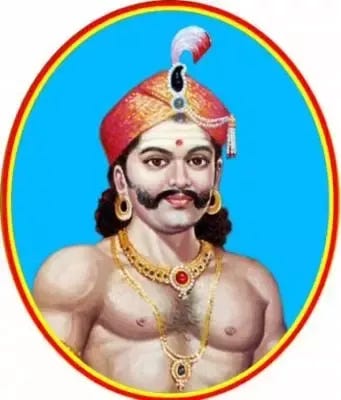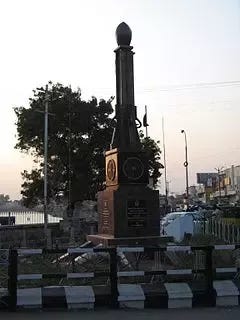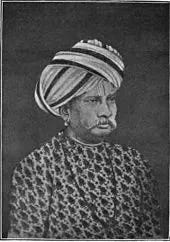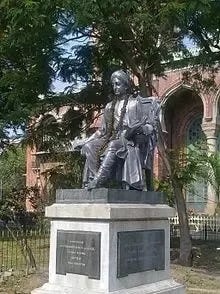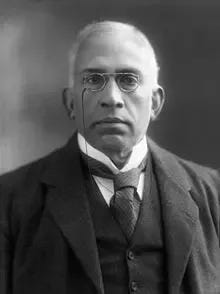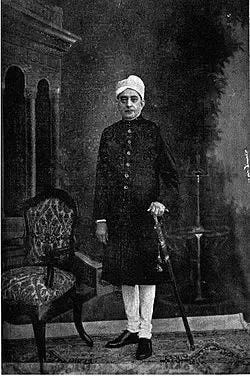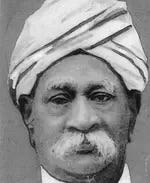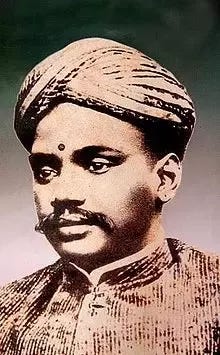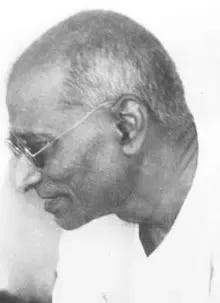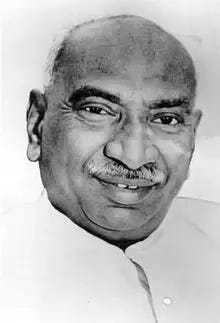Tamilians in Freedom Struggle
I had answered the question at Quora here, sharing the same.
Puli Thevar was one of the earliest opponents to the British rule in India. The ruler of Nerkattumseval located in Tirunelveli district, he was one of the palayakarars( or Poligars) who had a long running feud with the Nawab of Arcot( supported by the British). He revolted against the Nawab of Carnatic, when the latter tried to assert control over Madurai and Tirunelveli aided by the East India Company. In 1757 he raised the revolt, uniting all the polygars in Western part of Tamil Nadu. It was one of the earliest revolts against the British rule, though was put down by Yusuf Khan in 1761.
Interestingly Yusuf Khan also known as Marudanayagam, fell out with the Arcot Nawab, when the latter became insecure, that he might be deposed. The Nawab also used Yusuf’s own brother Mahfuz Khan against him. Some of the British traders in tandem with the Nawab spread the propaganda that Yusuf was now anti British, and that was good enough for the Nawab to act. The Arcot Nawab joined hands with the British, and they also instigated the Travancore Raja against Marudanayagam. Most of the polygars who were defeated by Marudanayagam, joined hands with the British and the Nawab against Yusuf. Finally after a long siege of Madurai, Yusuf Khan was forced to surrender to the British and hanged to death.
Tamil Nadu had it’s own Rani of Chennamma in Velu Nachiyar, the princess of Ramanthapuram, the only child of Raja Chellamuthu Sethupathy. A trained warrior and a scholar, she took to the battlefield after her husband, the king of Sivaganga,Muthuvaduganathaperiya Udaiyathevar, was killed in battle with the British and the Arcot Nawab. Giving powers to the Maruthu brothers to rule over Sivaganga, she fought against the British till the end.
Veerapandya Kattaboman, one of the greatest revolutionaries ever, a legend of sorts who to date captures the imagination of the Tamil people.The chieftain of Panchalankurichi in the Thoothukudi district, he refused to accept the sovereignty of the East India Company and waged a war against them. Betrayed and hanged by the British at Kayathar, he nevertheless became an inspiration to many freedom fighters. Another great hero was Veeran Sundaralingam, Kattaboman’s general, who blew up an entire ammunition dump of the British and was killed in that. Kattaboman’s younger brother Oomaithurai, allied with the Maruthu brothers of Sivaganga, Kerala Varma Pazhassi Raja and the Kongu chieftain Dheeran Chinnamalai, to fight what was the Second Polygar War. However in spite of the brave resistance, East India Company managed to put down the revolt of the Polygars and by 1801, controlled most of South India, which they consolidated as Madras Presidency.
Vellore Mutiny
The Vellore Mutiny on July 10, 1806, was the first recorded instance of the sepoys revolting against the East India Company, much earlier to the 1857 revolt. Though it lasted just for a day, it was one of the most brutal and violent one. On July 10, midnight, 4 companies of the British Infantry revolted in Vellore, 14 officers and 115 men of the 69th Regiment were killed. By dawn, the rebels seized control of Vellore Fort, and hoisted the flag of Mysore. However the British cavalry led by Sir Rollo Gillespie from Arcot, struck back and what followed was a bloodbath. 1oo Sepoys were executed, some blown by cannons, other shot dead, around 350 killed during the course of the action. It was one of the bloodiest revolts ever. There is a monument dedicated to this at Vellore.
The early 19th century, saw the forming of a nationalist movement in Tamil Nadu. One factor was the activities of the missionaries who were converting Hindus, and many saw the need of a movement to counter it. The nationalists began to start their own newspapers and run their own schools, colleges to counter the rising British influence. Gazulu Lakshminarasu Chetty started the Crescent, to counter the missionary propaganda. However it was the Hindu started by Subramania Iyer, Veeraragavachariar and Nyayapati Subba Rao, that played a major role in the spread of nationalist feelings.
Gazulu established the first political organization, the Madras Native Association, but it was the Madras Mahajana Sabha founded in 1884, that would play a significant role. Some of the prominent leaders like P.Rangaiah Naidu, Salem Ramaswami, played a major role here and this would be one of the predecessors to the Indian National Congress. In the first ever meeting of the Indian National Congress at Mumbai in 1885, 22 delegates were from Madras Presidency, underscoring the importance of the South. The prominent delegates were
S.Subramania Iyer, lawyer, Madras High Court
G.Subramania Iyer, founder of the Hindu
S.A.Saminatha Iyer, Chairman of Tanjore Muncipal Council
.Two years down the line, the Indian National Congress session in Madras in 1887, was a resounding success. In the start of the 20th century, a generation of leaders took charge such as
C.Sankaran Nair
C.P.Ramaswamy Iyer, Advocate General of Madras Presidency
S.Srinivasa Iyengar
P.Thyagaraya Chetty, who later founded the Justice Party
Rise of Extremists
When the Congress split at Surat in 1906, it also affected the party in Tamil Nadu. People like Subramanya Bharati and V.O.Chidambaram Pillai who were ardent followers of Bal Gangadhar Tilak, allied with the extremist side.
Subramanya Bharathy, was a freedom fighter, poet, social reformer, activist, regarded as of the greatest modern day writers in Tamil. Using simple Tamil, he spread the feelings of Nationalism through his writings and works, translated speeches of leaders like Aurobindo, Tilak and religious figures like Swami Vivekananda into Tamil. He was also a vociferous supporter of woman’s rights and fought against the caste system and untouchability.
V.O.Chidambaram Pillai, was an ardent follower of Bal Gangadhar Tilak, and started the first Indian owned shipping company. Sadly he was harassed by the British and his company was taken over. He instigated the workers of Thootukudi to revolt against the British in 1908, and he was arrested on charges of sedition.
V.V.S.Aiyar, was a close associate to Veer Savarkar, whom he met in London at the India House. He followed in the footsteps of Savarkar and had to flee to Paris to escape the British crackdown. He lived in exile in Pondicherry, was a great writer, also regarded as the father of the modern Tamil short story.
Anni Beasant launched the Home Rule League in 1915 during World War I, and was placed under house arrest. The Rowlatt Act, and the Jallianwala Bagh massacred infuriated many people in Tamil Nadu, and some like S.Subramania Iyer returned their knighthood in protest.
Pasumpon Muthuramalingam Thevar
One of the greatest freedom fighters from Tamil Nadu was Pasumpon Thevar, a very close associate of Netaji Subash Chandra Bose. He fought for the abolition of the Criminal Tribes Act, under which the British arbitrarily harassed some communities. He also founded the Pasumalai Mahalakshmi Workers Union and was jailed for leading a workers strike. Disillusioned with the Congress for it’s failure to act on the Criminal Tribes issue, he resigned along with Netaji. An ardent admirer of Netaji, he in fact mobilized all the votes from South during the election to the post of President at the 1939 Tripura Congress session. Along with Netaji he founded the Forward Bloc and soon became his right hand man. When Netaji toured the South, seeking support for INA, it was Thevar who mobilized the support for him, and got people to volunteer. In fact the INA had a large number of volunteers from South and it was all due to efforts of Pasumpon Thevar.
Apart from him, the other two important leaders were
Chakravarty Rajagopalachari or Rajaji, a close associate of Gandhi, the last Governor General of India. He also served as Chief Minister of Madras, was Home Minister for some time in Nehru’s Cabinet. He is famous for his books on Mahabharat and Ramayan in English. He later broke away from the Congress and founded the Swatantra Party, that advocated for a more rightward tilt on economic issues.
K.Kamaraj, acknowledged as the Kingmaker of Indian politics, served as the Congress President for four years. He was the Chief Minister of Tamil Nadu later, known for his simplicity and integrity. During freedom struggle he took part in the Vaikom Satyagraha led by Narayana Guru, and led the agitation against Simon Commission. Imprisoned for his participation in the Salt Satyagraha, along with Rajaji, also took an active part in the Quit India movement.





